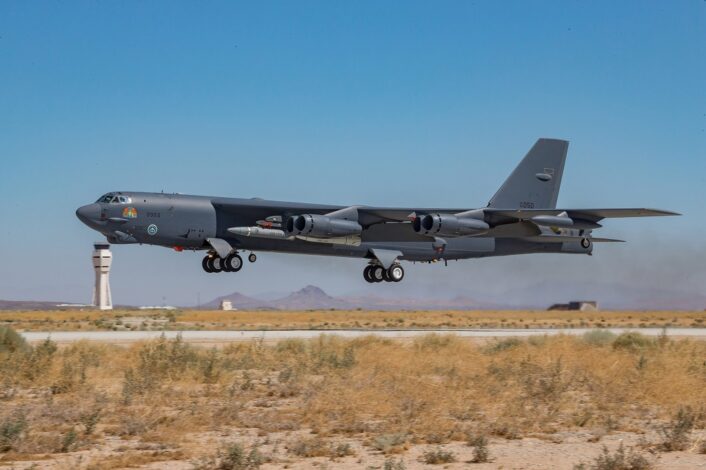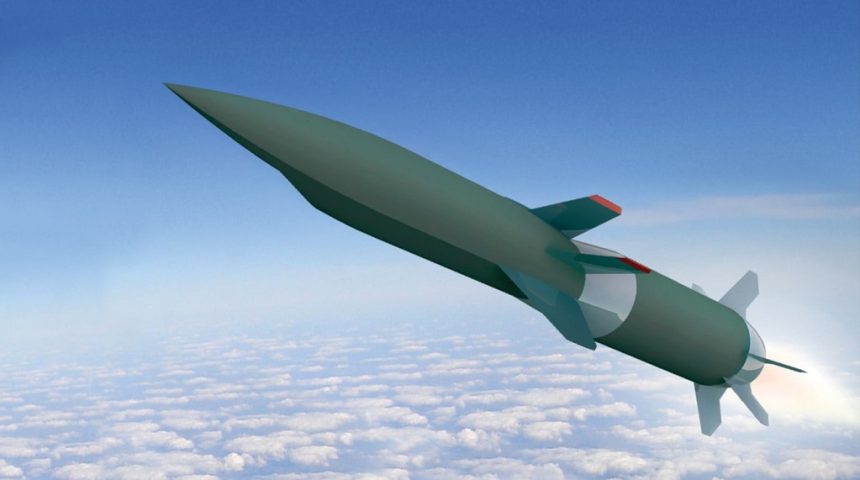The test, the first for Lockheed Martin’s HAWC prototype, happened last month but was kept under wraps to avoid escalating tensions with Russia.
DARPA and the U.S. Air Force recently completed a free flight test of the Lockheed Martin version of the Hypersonic Air-breathing Weapon Concept (HAWC). According to a defense official mentioned by CNN, the test happened in mid-March but the news was withheld for two weeks to avoid escalating tensions with Russia as furious fighting in Ukraine still continues after more than a month since the beginning of the invasion.
It is interesting to note that the timeline disclosed by CNN possibly puts this second HAWC test in the same timeframe of the claimed employment by the Russians of the Kinzhal hypersonic aero-ballistic missiles in Ukraine. In the same timeframe the US also first postponed and then canceled a test of the Minuteman III intercontinental ballistic missile (ICBM) to avoid any misinterpretation by Russia.
After release from a B-52H bomber used as carrier aircraft off the west coast, the HAWC vehicle, was boosted to its Aerojet Rocketdyne scramjet engine ignition envelope in the supersonic speeds’ range. From there, it quickly accelerated to and maintained cruise faster than Mach 5 (five times the speed of sound) for an extended period of time, reaching altitudes greater than 65,000 feet and flying for more than 300 nautical miles.
“This Lockheed Martin HAWC flight test successfully demonstrated a second design that will allow our warfighters to competitively select the right capabilities to dominate the battlefield,” said Andrew “Tippy” Knoedler, HAWC program manager in DARPA’s Tactical Technology Office. “These achievements increase the level of technical maturity for transitioning HAWC to a service program of record.”
This is the second successful flight in DARPA’s HAWC program that we know of. Last September, a different vehicle configuration from Raytheon and Northrop Grumman successfully flew during the first free flight test related to the program. In both occasions details about the tests have been scarce, as this is considered a highly sensitive program.

The goals of the first two missions were the vehicle integration and release sequence, safe separation from the launch aircraft, booster ignition and boost, booster separation and engine ignition, and cruise. The HAWC flight test data will be analyzed to validate affordable system designs and manufacturing approaches that will field air-breathing hypersonic missiles to operational units.
DARPA mentioned in the press releases the participation of the U.S. Navy to the tests without specifying the role, even if it is plausible that the reason might reside in the use of the sea ranges off the west coast, like the Point Mugu Sea Test Range, for an instance.
Hypersonic air-breathing vehicles utilize air captured from the atmosphere to achieve sustained propulsion without the need of rotating parts. The fast-moving, compressed air flow coming through the scramjet engine’s inlet is mixed with a hydrocarbon fuel and ignites, before being ejected trough a nozzle which propels the missile at a speed greater than five times the speed of sound.
The speed and maneuverability of hypersonic cruise missiles allow both evasion of defenses, as speed and maneuverability make it difficult to detect in a timely way, and quick strikes. Their significant kinetic energy can effectively destroy targets even without high explosives.
While the HAWC program seems to be moving on without problems, another US hypersonic weapon, the AGM-183A Air-Launched Rapid Response Weapon, is suffering the consequences of its multiple failed tests. The US Air Force planned the ARRW to be its first operational hypersonic weapon, however the service has no plans anymore to buy its first missiles in the fiscal year 2023 budget.
As reported by Breaking Defense, according to Defense Department budget documents, the Air Force initially requested $46.6 million to procure one ARRW missile in FY23. The service, however, later decided to transfer that funding back into the research and development portion of the budget. It is not known yet how this will impact the ARRW program.









